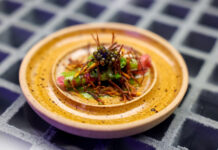It’s a persistent myth: You can’t freeze food twice. But that’s not entirely correct, because under certain circumstances this is not a problem. We explain how to avoid health risks in the kitchen.
It’s one of those myths that persists: you shouldn’t freeze anything twice. This is also true for sensitive foods such as raw meat such as minced meat or poultry and raw fish. However, the kitchen rule about freezing is not entirely true, because there are also foods that tolerate it quite well – without any health risks for you. Here are the tips at a glance:
This means that thawed, raw meat can be cooked through and then frozen again without any problems. However, if the cooked food has been left outside at room temperature for a longer period of time, it should not be frozen again.
It is best to only defrost as much as you actually consume. After all, water is always lost in the food when it is thawed, which means that the quality suffers.
Daniela Krehl from the Bavarian consumer advice center says, “It always depends on how fresh the food is.” Bacteria and germs are not killed by the low temperatures, but their growth is only greatly slowed down.
If you thaw the food, the bacteria will find the perfect conditions to multiply: moisture and warmth. This would also happen again on the second thaw.
“Only flawless food may be refrozen. It’s best to have a cooking process in between,” says Krehl. For example, a sauce made from frozen minced meat could easily be cooked and then frozen. Cooking kills most germs first.
According to the regulation for deep-frozen food, numerous frozen products must be provided with a warning: “Do not refreeze thawed food”. According to the German Frozen Food Institute, this measure has the following background: “It is a precautionary measure so that thawed products are consumed immediately and are not stored at above-zero temperatures before they are frozen again.” Because then the products are exposed to increased germ formation.
















































